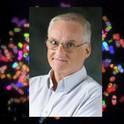Excel 2007 file with calculations for multicolor 3D-EasySTED segmented waveplates (SWP) for fluorescence nanoscopy.
Additional explanation in my Introduction statement and in the Excel file. The Excel file uses an interpolation function available from XlXtrFun (http://www.xlxtrfun.com/XlXtrFun/XlXtrFun.htm). My thanks to Goetz Zinner, www.B-Halle.de, for communicating to me that a single 3D-EasySTED segmented waveplate can be used with multiple excitation and depletion wavelengths.
Please give Goetz Zinner full credit for recognizing that STED segmented waveplate can be manufactured to handle multiple excitation and depletion wavelengths. Different sets of wavelengths can be generated by choosing appropriate thickness quartz substrates for manufacturing the SWP. This in turn enables multicolor STED by selecting appropriate fluorophores and one SWP - no moving parts greatly simiplies alignment.
The Leica CW-STED and TiSa STED products have a serious flaw: the Vortex Phase Filter (VPF) results in a 2D improvement of resolution from 214 nm XY confocal (pinhole 1 Airy unit, lambda 500 nm, numerical aperture 1.4) to ~80 nm XY for either Leica STED instrument. Unfortunately, the VPF does not improve Z-resolution: ~600 nm for both standard confocal and STED mode. This means that the STED volume, 80x80x600 nm is prettyy much identical to that of 3D-SIM, ~110x110x300 nm. See figure 3 in Schermelleh et al 2010 JCB,
http://jcb.rupress.org/content/early/2010/07/14/jcb.201002018/F3.expansion.html
In fact, since 3D-SIM, in particular Applied Precision's OMX could use the Olympus 100x / 1.65 NA objective lens and 405 nm excitation - with perhaps Abberior's STAR 440SX fluorophore, XY resolution could be 90 nm and Z-resolution could be ~270 nm, smaller than Leica commercially available STED as of 2/2012 (I anticipate Leica will introduce time gating STED later in 2012, which with stringent selection of photons should improve TiSa STED to ~50 nm ... use of the STAR dyes or similar excellent STED fluorophores should also help).
The Reuss 3D-EasySTED segmented waveplate provides a very simple way to improve both XY and Z resolution in STED nanoscopy: Reuss documents 50x50 nm XY and 210 nm Z resolution. He only briefly mentions that this is a combination of the 3D-EasySTED SWP and time gating. However, the Z resolution improvement is critically improved by his 3D-EasySTD design.
The Excel file here takes Reuss's 3D-EasySTED a bit further by numerically showing that a single 3D-EasySTED SWP can be used with multiple excitation and depletion pairs.
The combination of:
* 3D-EasySTED segmented waveplate
* pulsed laser excitation (~200 fs pulse duration optimal)
* pulsed laser depletion, with this pulse arriving several picoseconds after the excitation pulse (achieved using an adjustable pulse delay line) and on for around 100 to 300 ps (achieved by pulse stretching through glass optics and ~100 meter polarization preserving optical fiber)
* time gating with fluorescence lifetime imaging microscopy, usually TCSPC FLIM hardware (i.e. Leica HyD-FLIM detector and PicoQuant or Becker&Hickl TCSPC electronics and software) to gate out the "bad" early photons (those that were emitted during the depletion pulse on time, also those signals - likely electronic noise - that are very late in the excitation pulse interval)
* excellent STED fluorophores, such as Abberior's STAR 440SX or STAR 635 (www.abberior.com) or DNQDI (Lau 2011 Proc SPIE 7910N)
For the University of Miami custom "Synergy STED" grant proposals (submitted in Sept 2011) we selected the Coherent Lasers Chameleon Ultra II Ti:Sa laser plus Chameleon OPO-VIS to provide four pulsed laser outputs from 370-1600 nm (we do not really see a need for ~1300-1600 nm, but for budget reasons we did not ask for additional money for an SHG or THG "box" and additional dichroic combining optics to convert this to 650-800 nm or 433-533 nm, respectively). Given the conservative nature of the NIH and DoD instrument funding study sections, we doubt that either agency will fund our 9/2012 proposals - if you would care to donate ~1M to upgrade our current Leica SP5 confocal microscope or ~1.7M for a new Synergy STED nanoscope, feel free to email me. This document and Excel file are being posted online so that other researchers do not need to wait for us to get moving on this capability.
Abberior (www.abberior.com) now (2012) sells the 3D-EasySTED SWPs and they can be ordered (for less money) directly from www.b-halle.de.
The 3D-EasySTED segmented waveplate was invented by Matthias Reuss in Stefan Hell's lab (Max Planck Institute). Dr. Reuss's PhD dissertation has full details -
http://archiv.ub.uni-heidelberg.de/volltextserver/volltexte/2011/11539/pdf/Reuss_Dissertation.pdf
Some of Dr. Reuss's work has been published in peer articles - searchable through:
http://www.ncbi.nlm.nih.gov/pubmed?term=reuss%20hell
but the dissertation is a more thorough explanation than is possible in even a series of peer review articles. Several other Hell lab PhD dissertations are online - the URL for the coolest one is
http://archiv.ub.uni-heidelberg.de/volltextserver/volltexte/2008/7969/pdf/CryoSTED_microscopy_PhDThesis_agiske.pdf
For that matter, other fluorescence nanoscopy = super-resolution microscopy PhD dissertations are online and can be found with a modest search effort. In particular, the building of the first Sedat lab OMX (Optical Microscope eXperimental) with structured illumination microscopy is Haase's, available at
http://www.api.com/downloads/pdfs/papers/Hasse_Dissertation.pdf
- STED,
- FLIM,
- segmented waveplate,
- 3D-EasySTED
Available at: http://works.bepress.com/gmcnamara/3/
